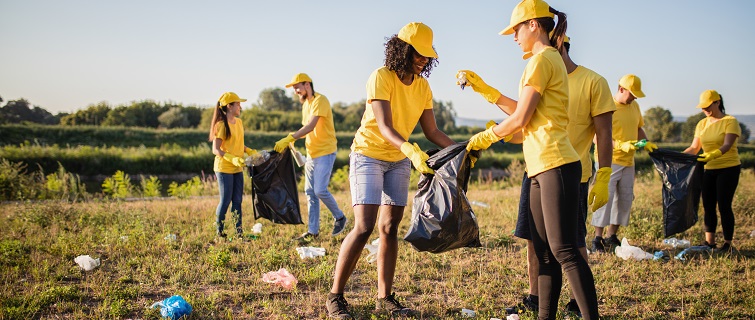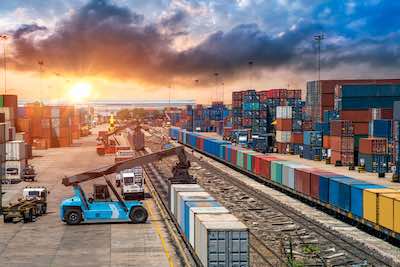
Does doing good help a company’s bottom line?
In the past, the answer might have been no, but things have changed dramatically in the information age. The internet and social media have empowered consumers, informing them about companies’ business practices around the world and offering them more informed choices about where to shop. Likewise, employees increasingly want to work for companies that exemplify what business leaders call corporate social responsibility (CSR) in areas such as wage practices, gender equity, and the environment.
Furthermore, there is evidence that more equitable and inclusive business practices make companies nimbler and more innovative. And all this can, indeed, show up in the bottom line.
Beyond ‘Checking Boxes’
Take diversity. According to a 2018 study by the Boston Consulting Group (BSC), companies with diverse management teams create the kind of synergy that results in innovation—and 19 percent more revenue.
“Corporate social responsibility has sometimes been thought of as checking the boxes of the things that corporations are supposed to do,” said Linda Dunn, Faculty Director of the Georgetown University Master’s in Supply Chain Management program. “This is about moving away from that and realizing that the areas you focus on can lead to competitive advantage.”
CSR is sometimes referred to as to “The Triple Bottom Line—people, planet, and profit,” said Justin Goldston, Ph.D., faculty member and subject matter expert for the master’s program. Corporations that embrace this concept can have a big impact on their supply chains, which can range from dozens of suppliers for small- and medium-sized corporations, to hundreds of suppliers for large ones.
Enterprise Resource Planning (ERP) software can help corporations attain better “transparency and visibility throughout the supply chain,” Goldston said.
“We can integrate all our customer communications. We can integrate all our supply communications,” Goldston said. “We can create supplier score cards so a supplier can see how they are performing, based on the way we view it—how we view their quality, their on-time delivery, and things like that.”
Learning from Experience
What happens when corporations don’t pay close enough attention to the practices of their suppliers? IKEA, the Swedish furniture company, found out the hard way in the late 1980s, when some of its children’s bookcases were found to have unacceptable levels of formaldehyde. Amid considerable media coverage, IKEA investigated, found the supplier, and went on to make significant changes. In 2018 and 2019, the company earned a grade of A- on environmental practices from the Mind the Store campaign.
Unfortunately, there are other examples where multinational companies fall far short of ensuring that all of their suppliers comply with fair labor and human rights standards. One of the most problematic nations is China, whose authoritarian government and control of information make it easier for some factories to evade global standards.
A more encouraging story comes from the U.S. retail giant, Walmart, which announced in December that it was creating a program to train and prepare 50,000 small businesses in India to join its supply chain. The company is partnering with local universities and the India-based nonprofit Swasti to provide five years of training to these MSMEs (Micro, Small, and Medium Enterprises).
A Question of Balance
More efficient workplaces, greater emphasis on worker development, more transparent supply chains—these practices and more can lead to greater profitability. But regardless of the industry, corporate social responsibility also involves costs. So, as with any business endeavor, these costs have to be weighed against benefits.
The food services industry is a good example of the complexities facing businesses that want to promote such things as sound environmental practices and better health, said Laura Lapp, Vice President for Sustainability & Culinary Services at Chartwells Higher Education Dining Services. One of the biggest priorities for her company, which serves about 300 college campuses, is to reduce food waste. Much of this can be done by educating students about the issue, which is a win-win for everyone; the dining hall saves money, students are more conscious about what they eat, and less food gets into the waste steam.
Jumping the Hurdles
When it comes to improvements in the supply chain—such as using more locally sourced food and more humanely developed animal products—the benefits often have to be weighed against the costs.
Lapp’s operations have switched to certified humane cage-free eggs, and they’re moving that way on liquid eggs as well.
“Operationally, one of the biggest problems we’re facing is that they’re more expensive, and that’s not a cost that we want to pass on to our consumers,” Lapp said. “So we’re looking at creative ways to re-menu things and make sure we’re not having a negative impact on our individual operations.”
Another challenge is keeping up with differing state and local regulations, especially in areas where there are no federal standards, Lapp said.
“It’s less efficient, if we can be honest, because the more sustainable way is not the fast way, necessarily, and it’s not volume-driven, necessarily,” Lapp said, noting that it may be hard to find a critical mass of organic growers, for example, in certain localities.
Consumers will also have to do their part and learn more about how their choices impact issues like the environment, Lapp said.
“We’re so used to whatever we want, whenever we want it,” Lapp said. “I’m as guilty as the next person for looking for strawberries in December, even though they’re not in season. The stores are certainly not getting them anywhere locally. So I think it’s going to take a lot of education for the American public too—to realize the stresses our demands are putting on the system as a whole.”
